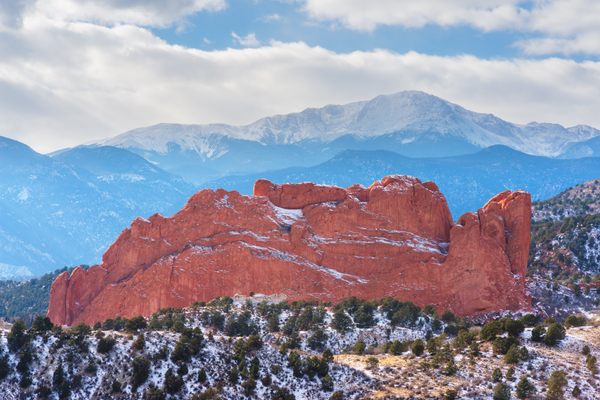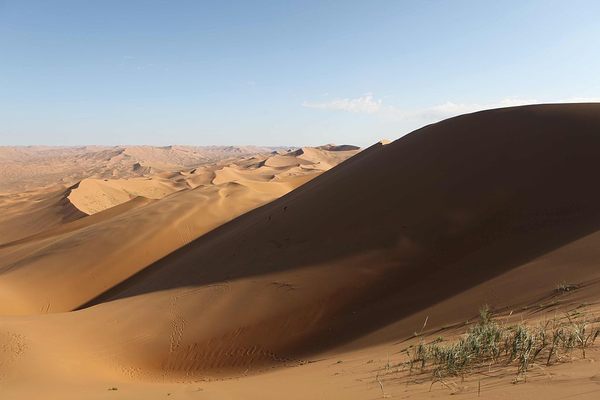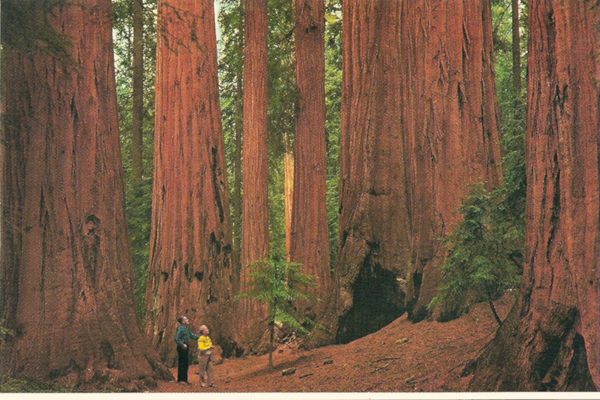
10 Natural Wonders That Will Make You Think You’re on Another Planet
Red lakes, glowing caves, and towering pinnacles—all right here on Earth.
With ice-blue caves, kaleidoscopic lakes, and confusing rock formations, Earth is capable of producing some over-the-top scenery. These transportive landscapes are escapes from modern life—sometimes to what feel like other planets altogether. Below are some of our favorite otherworldly natural wonders across the world, from the marvelous to the strange.

Lake Natron, Tanzania
Don’t let the ring of salty marshes along the edge of Lake Natron fool you: This body of water is one of the most inhospitable areas on Earth. Colored a deep red from salt-loving organisms and algae, the lake reaches hellish temperatures and is nearly as basic as ammonia. Although most human settlements throughout history have formed around lakes and rivers, the barren landscape around Lake Natron tells a clear story of a place no one has ever wanted to live in.
Chile Marble Caves, Chile
Carved into the Patagonian Andes, the Cuevas de Mármol are located on a peninsula of solid marble along Lake General Carrera, a remote glacial body of water that spans the Chile-Argentina border. Formed by 6,000-plus years of waves washing up against calcium carbonate, the smooth, swirling blues of the cavern walls are a reflection of the lake’s azure waters, which change in intensity and hue depending on water level and time of year.

Lençóis Maranhenses Dunes, Brazil
The Lençóis Maranhenses Dunes look like the white sand undulations of any sandy desert, save for the deep, blue pools of water that collect between them. Located on the edge of the Preguiças River, the seeming desert region is just adjacent to the tropical Amazon Basin, so the dunes are subject to the nearby area’s torrential rainy seasons. Between July and September, the depressions between the mounds fill with rainwater, creating pools ranging from small ponds to deep lakes.
White Desert, Egypt
Just a few hours from the bursting metropolis of Cairo lies a desert that will make you feel like you’ve landed on the surface of the Moon. Formed by centuries of erosion and sandstorms, these unique snow-white calcium rock formations crop up across the landscape like great abstract statues. Some that resemble food have been given names such as “mushroom” and “ice-cream cone,” while others have inspired more grandiose designations, such as “the Monolith” and “Inselberg.”

Waitomo Glowworm Caves, New Zealand
In 1887, Māori Chief Tane Tinorau, along with an English surveyor named Fred Mace, decided to explore the Caves of Waitomo on New Zealand’s North Island. Atop a tiny raft, they entered the system, where a stream descends deeper. With candles, they carefully navigated the current, and in the darkness they noticed starlike lights scattered above their heads. Thousands of glowworms were hanging peacefully from the ceiling, forming a magnificent bioluminescent cosmos. The colony of worms remains to this day, lighting up the cave with an eerie blue glow.
Caño Cristales, Colombia
For most of the year, Caño Cristales is indistinguishable from any other river: A bed of rocks covered in dull green mosses is visible below a cool, clear current. But for a brief period from September through November, the river blossoms in a vibrant explosion of colors. During the short span between the wet and dry seasons, when the water level is just right, a unique species of plant that lines the river floor, Macarenia clavigera, turns a brilliant red. It is offset by splotches of yellow and green sand, blue water, and a thousand shades in between.

Avatar Hallelujah Mountain, China
Zhangjiajie National Forest Park is famous for its 3,000 vertical pillars, each standing hundreds of feet tall and covered in dense green foliage. These pillars were formed by erosion and draw upwards of 30 million tourists every year. One of the pillars was named the “Southern Sky Column,” and it soars 3,544 feet in the air, the length of 78 school buses. In 2010, the name was changed to Avatar Hallelujah Mountain after the highest-grossing film of all time, Avatar, used photographs of the pinnacle as inspiration for the floating Hallelujah Mountains of Pandora.
The Spotted Lake, Canada
The Spotted Lake, or Kliluk, is a strangely patterned body of water located between the Okanagan and Similkameen Valleys in the desert of British Columbia. It contains large amounts of magnesium sulfate, calcium, and sodium sulfates, along with other minerals and traces of silver and titanium. When water evaporates during summer in the arid climate, these minerals are revealed in the “spots” of the lake’s name. Considered a sacred medicine area by First Nations people in both Canada and the United States, the lake they call Kliluk is surrounded by cairns—rock piles often indicating graves.

Pamukkale Water Terraces, Turkey
Once a kind of Roman-era health spa, the spectacular rock formations below the ruins of the ancient city of Hierapolis form a series of pale-blue pools cradled within blindingly white hills. Waters from ancient hot springs have been spilling down the hillside for millennia, forming crystalized terraces of oyster-shell shaped ponds. In this natural fountain, the white travertine is constantly refreshed by the cascade of calcium-rich waters.
Bisti Badlands, United States
Located in the arid desert of northwestern New Mexico, the Bisti Badlands (also known as the Bisti/De-Na-Zin Wilderness) offer one of the closest approximations of an unknown alien world as can be found right here on Earth. The blasted landscape is covered in strange, undulating, fungal shapes made of colorful sandstone and shale. Huge hoodoos and small labyrinths have been created by eons of moisture wearing away at a softer layer of ash, creating improbable, top-heavy oddities.

























Follow us on Twitter to get the latest on the world's hidden wonders.
Like us on Facebook to get the latest on the world's hidden wonders.
Follow us on Twitter Like us on Facebook